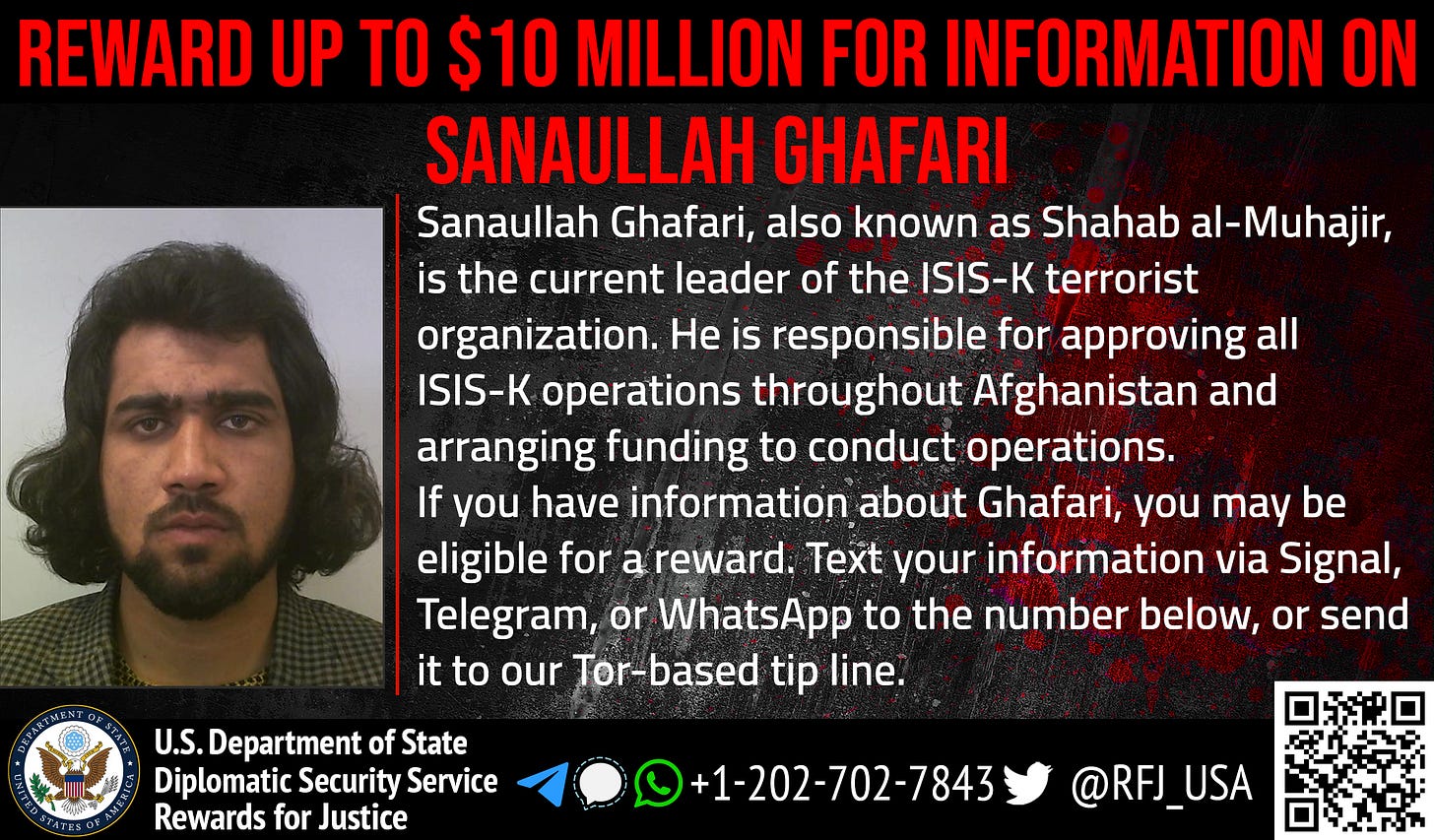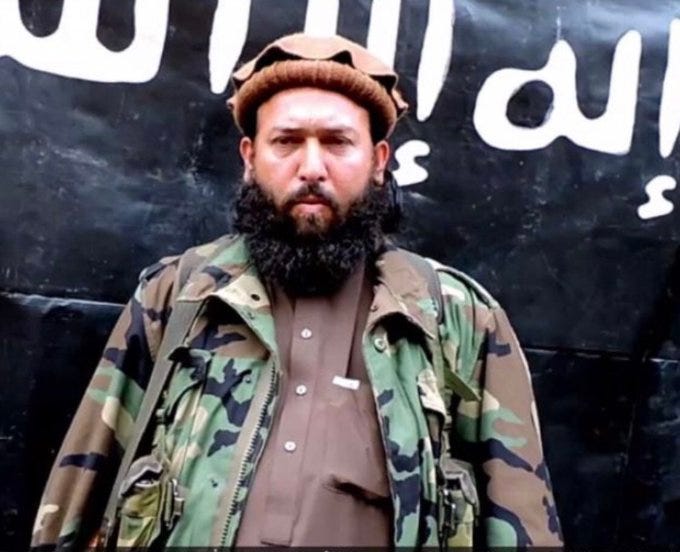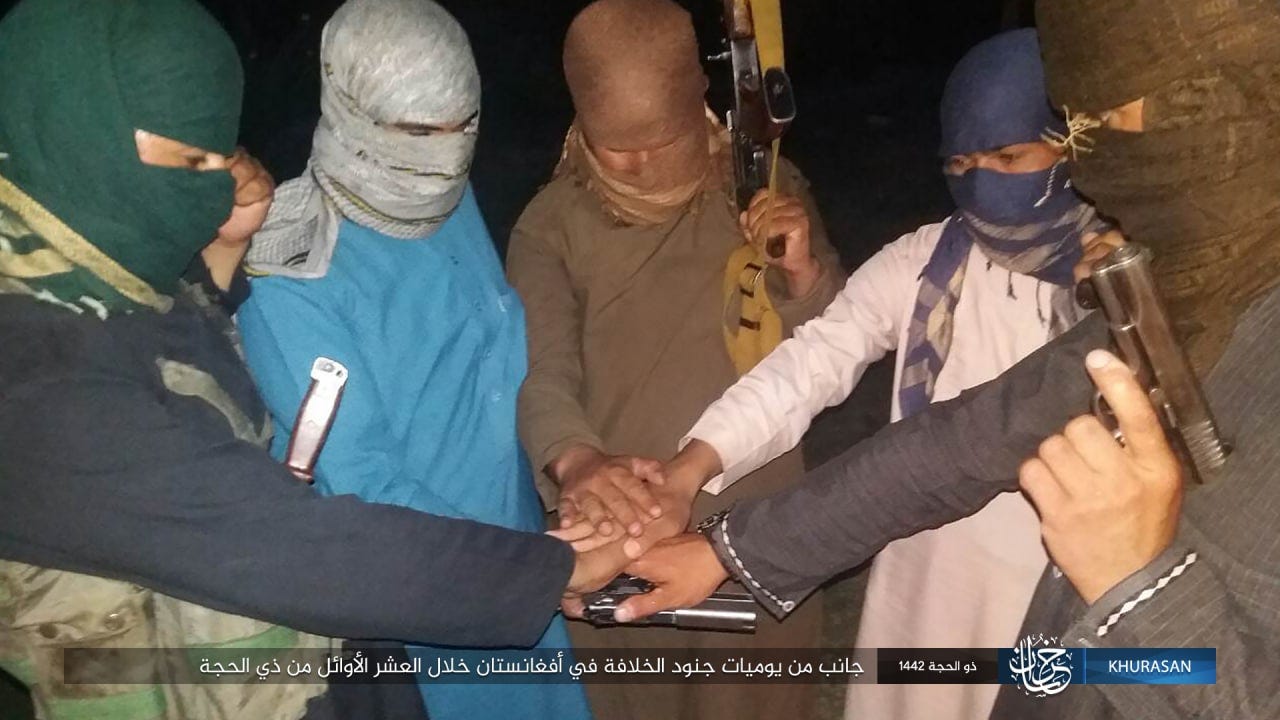History of ISIS in Afghanistan and Pakistan
How did they get to challenge the Taliban??
It is August 26th 2021, 18:00, at the Kabul airport. A powerful blast is heard in the middle of the crowd. A suicide bomber detonated himself among all the people who aimed to flee from the Taliban. As a result, 170 Afghans were killed, along with 13 US troops. Since the US and NATO troops withdrew from Afghanistan back in 2021, terror activity resumed in the region.
ISKP suicide bomber, Abdul Rahman Logari. Responsible for the Kabul Airport Arrack. Source: @UrduwoodExposed
According to the UN, the Islamic State has been present in every province of Afghanistan since the return of the Taliban. Even a spokesman of the Taliban acknowledged that their victory accidentally helped their rivals, with their numbers increasing from 2000 to 3500.
However, when did the Islamic State arrive to the land of their rivals? Who brought them there? What have they done? In this article, I will tell you the history of this deadly branch of ISIS, ranked among the most powerful, perhaps even more than their mother organization in Syria and Iraq.
The Islamic State Khorasan Province initially consisted of other groups’ members, like Lashkar-e-Taiba, Jamaat-ud-Dawa, the Haqqani Network, and the Islamic Movement of Uzbekistan, among others.
Between the fall of the Caliphate in Iraq and Syria and the fall of the Afghan government, the leadership turned its sights into Afghanistan and Pakistan. Many fighters fleeing Syria have joined its ranks.
The group has faced competition from other groups, like the Taliban.
The group is led by the mysterious Shahab al-Muhajir, who is responsible for its resurgence. His real name is Sanaullah Ghafari, and he comes from the district of Shakardara, northern Kabul. He holds an engineering degree from the Kabul University, where he adopted the Salafi ideology. He also has jihadist backgrounds thanks to his family, who belonged to the Islamic Party, of the famous warlord, Gubuldin Hekmatyar.
Before joining the Islamic State, al-Muhajir fought under this banner. He then joined factions affiliated with the group known as the Haqqani Network. After this, he was one of the first to pledge allegiance to al-Baghdadi when ISIS arrived to Afghanistan in 2015. He then rose until he was named as deputy leader of the group in Kabul. When he was named as leader, he was seen as an urban warfare expert. He aimed to target the former Afghan government and pursued the release of the group’s members.
Source: Rewards for Justice @RFJ_USA
Al-Muhajir is constantly praised for his involvement in the 2020 Jalalabad Prison Break and the Kabul Airport bombing.
Currently, the Islamic State is present in every part of Afghanistan. Currently, with no Coalition to challenge them, and with the Taliban having limited resources, the group has very favorable conditions to exploit.
The Islamic State announced the establishment of the Khorasan Province in 2015. Back then, a coalition of defectors from the Pakistani Taliban, and minor groups from Afghanistan, pledged allegiance to Abu Bakr al-Baghdadi. Then, the pledges of allegiance were accepted by the spokesman, Abu Muhammad al-Adnani. However, people were beginning to pledge allegiance to al-Baghdadi even before the proclamation of the Caliphate. Nine former al-Qaeda members pledged allegiance back in March 2014. After the Caliphate was declared, 6 former Pakistani Taliban commanders joined ISIS in October 2014.
It was founded by former members of the Pakistani Taliban. The group’s early membership included a contingent of Pakistani fighters who emerged in the Nangarhar Afghan province in 2010. Many of these fighters were fleeing from Pakistani Security Forces. Also, some of the founders were members of the Haqqani Network who had fought in Syria and Iraq, and returned to Afghanistan. The group recruited from the Taliban’s ranks and commanders when it was founded.
Their first leader was Hafiz Saeed Khan, a veteran from the Pakistani Taliban. Initially, he pledged allegiance to Abu Bakr al-Baghdadi back in October, 2014. He was killed in Nangarhar province, on July 26, 2016, on a US strike. He was succeeded by Abdul Hasib, killed in April 2017; the next leader was Abu Sayed, killed on July 11, 2017; then Abu Saad Orokzai, who was eliminated on August 25, 2018. The current leader is Dr. Sahab al-Muhajir.
Hafiz Saeed Khan. Fuente: FJ @Natsecjeff
The group has recruited from other jihadist organizations in the region, like the Pakistani Taliban, al-Qaeda, the Haqqani Network, and the Taliban themselves. As well, they have gathered recruits from the populations, like Nargarhar and Kunar. The group has also aimed to recruit from Tajikistan, Bangladesh, India and Myanmar. The group has recruited Indians, Uyghurs, Central Asians, and Kashmiris.
One of the first things it did when it was founded on January 2015, was to declare war on the Taliban.
The group launched an offensive in Achin and Deh Bala in 2016. However, Afghan National Security Forces counterattacked with Operation Green Sword.
The group changed its anti Pakistan and anti Iran agenda, for an anti Taliban and anti minorities from 2017 onwards. The group attempted to take away the Tora Bora Mountains from Taliban’s influence during this period. From December 2017 to March 2018, the group started to receive among 400 and 700 Arab fighters that were fleeing the Caliphate’s collapse in Syria.
The Khorasan Province suffered losses in Nangarhar, Kunar, Jowzjan, Ghor, and Zabul through 2017. It then flexed its muscles worldwide. Jowsjan, Kabul and Nangarhar, saw the highest number of attacks. Meanwhile, the rest of the provinces saw very little attacks. This year, ISKP increased its breadth of operations regarding the locations. They included Nuristan, Kunar, Nangarhar, Kabul, Ghor, Jowzjan, Helmand, Sar-e-Pol, Baghalan, and Herat.
Since its foundation in 2015, until 2019, the group killed almost 6800 in Afghanistan and 2073 in Pakistan. The most of the attacks were in Kabul, followed by Jalalabad, and Quetta in Pakistan.
From 2016, to 2021, the group was considerably weakened due constant targeting from the US forces, the Taliban, and the Afghan government. President Ashraf Ghani declared victory over the Islamic State in Nangarhar on November 2019. However, the group has gained strength under the leadership of Shahab al-Muhajir, helped by the withdrawal of the Coalition troops.
ISKP was forced to focus on urban centers by the end of 2019 due its weakness. However, the group had a continued dedication to launch attacks, signaling their potential resurgence from 2020 onwards. The group paved the way for their comeback since then, in the midst of the US-Taliban peace talks.
Source: War Noir @war_noir
Upon the loss of power by ISKP, and the death of Abu Bakr al-Baghdadi in 2019, al-Qaeda offered an “amnesty” to those that had defected to ISIS. However, it is unclear how many of them accepted.
The group was involved in a 2020 plot involving Tajik citizens in Germany, who were in contact with Afghan leadership, and aimed to attack US and NATO military facilities.
During spring and summer of 2021, the group began to attack electricity pylons and oil tankers, something that is being carried out until this day. This is a form of economic warfare, and an attempt to challenge the legitimacy of the former Afghan government and the Taliban.
After the US withdrawal and the subsequent conquest of the country by the Taliban, the group claimed responsibility for 127 attacks in Afghanistan (and increasing), most of which were against the Taliban. Sixty percent of these occurred in Nangarhar. They have targeted security convoys, vehicles, checkpoints, security personnel, members of the former government, media personnel, civil society activists, community elders, and members of the Salafi community that are against ISKP.
The group has carried out many attacks, both before and after the US withdrawal. Among the deadliest ones, we have one that took place on July 2016, when suicide bombers from the group targeted Hazara protestors in Kabul, killing 80 and wounding 260 people.
One of the greatest attacks was carried out on February 16, 2017. A suicide bomber in the female section killed 100 people in a Sufi shrine in Sehwan, Pakistan, and injured 250.
On April 22, 2018, the Islamic State attacked an Afghan voter registration station in Kabul, killing 57 people, and injuring 159.
On September 2018, the group attacked a wrestling club in Kabul. It also attacked a commemorative anniversary of a resistance leader. In total, it killed 30 people.
On April 12th, 2019, an Islamic State Khorasan suicide bomber killed 22 people in a Shia vegetable market in Quetta, Pakistan.
On August 17th, 2019, the group used a suicide bomber to attack a wedding in a Shia neighborhood in Kabul. As a result, 92 people died.
On March 2020, ISKP attacked a Sikh Gurudwara. At least 25 people were killed by three gunmen who entered the temple. The temple was full of worshippers at the time.
On May 24, 2020, the group killed 24 people at a maternity ward, including mothers and babies.
On August 20, 2020, the Khorasan Province of the Islamic State attacked a prison in Jalalabad, killing 29 people, and more than 1000 inmates were released.
The group carried out a car bombing against a female school on May 8th, 2021. Their targets were girls from the Hazara community, of who among 90 and 200 died.
One of their deadliest attacks took place on August 26, 2021, during the withdrawal process. A suicide bomber of ISKP killed 176 Afghans, 13 US troops, and some Taliban fighters in the Kabul airport.
Mohammed al-Uyghuri. Responsible for the Kandahar mosque attack on October 2021. Source: FJ @Natsecjeff
The group attacked Hazara Shia mosques in Kandahar and Kunduz after the US withdrawal. The Kunduz attack killed between 55 and 100 worshipers, while the Kandahar attack killed at least 65 people.
On April 18th, 2022, the Khorasan Province targeted a base in Uzbek territory with ten rockets.
The group launched rockets into Tajik territory on May 7th.
On September 5th, 2022, ISKP killed 25 people at the Russian embassy in Kabul, including 2 embassy employees and 4 Afghan civilians.
On October 26, 2022, a guman that belonged to the group killed 15 parishioners in Shah Cheragh, a mausoleum in Shihraz, in the Fars Province in Iran.
Conclusions
Since they arrived to Afghanistan, the group has had its good and bad moments. Through all these years, they have recruited from many groups in the region, including the Taliban themselves.
The group has international goals, going farther from Afghanistan and Pakistan. They have shown this by recruiting people from abroad, and attacked in the Central Asian countries.
The group currently poses a threat to the minorities in Afghanistan, like the Hazaras and the Sikhs. They have had the minorities in their radar since they were founded. However, the Taliban are currently their main enemy, this since their foundation in 2015.
Guillermo is a journalist, writer and independent international analyst. If you like what you read, please support him by donating:
CUENTA: 26-02292515-1
CLABE: 014320 260229 251515
Santander México
https://www.paypal.com/donate/?hosted_button_id=FWD9U4PJL7ZPQ
This money will help to do more research, improve this website, and get more material. Thank you!
Trabajos citados
ADL. (23 de September de 2021). ISKP (Islamic State Khorasan Province). Recuperado el 19 de October de 2022, de ADL: https://www.adl.org/resources/backgrounders/iskp-islamic-state-khorasan-province
al-Jazeera. (21 de April de 2022). At least 16 killed as explosions rock Afghan cities. Recuperado el 18 de October de 2022, de al-Jazeera: https://www.aljazeera.com/news/2022/4/21/deadly-explosion-rips-through-shia-mosque-in-afghanistan
al-Jazeera English. (18 de August de 2019). Afghanistan: Scores killed in Kabul wedding blast. Recuperado el 14 de November de 2022, de al-Jazeera English: https://www.aljazeera.com/amp/news/2019/8/18/afghanistan-scores-killed-in-kabul-wedding-blast
BBC News. (27 de October de 2022). Fifteen killed in attack on Shia mausoleum in southern Iran. Recuperado el 14 de November de 2022, de BBC News: https://www.bbc.com/news/world-middle-east-63405073
Calderón López, G. (9 de May de 2022). The Islamic State Threat to Afghanistan and Its Neighbors. Recuperado el 18 de October de 2022, de Militant Wire: https://www.militantwire.com/p/the-islamic-state-threat-to-afghanistan
Center for Strategic and International Studies. (2018). Backgrounder: Islamic State Khorasan (K). Washington D.C.: Center for Strategic and International Studies.
Daymon, C. (27 de August de 2021). What is the Islamic State in Khorasan? Recuperado el 19 de October de 2022, de Lawfare Blog: https://www.lawfareblog.com/what-islamic-state-khorasan
Hashim, A. (13 de April de 2019). Pakistan: Deadly explosion rips through Quetta market. Recuperado el 14 de November de 2022, de al-Jazeera English: https://www.aljazeera.com/news/2019/4/13/pakistan-deadly-explosion-rips-through-quetta-market
Jadoon, A., & Mines, A. (2020). Broken, but not Defeated: An Examination of State-Led Operations against Islamic State Khorasan in Afghanistan and Pakistan. New York: Combating Terrorism Center at West Point.
Jadoon, A., Sayed, A., & Mines, A. (2022). The Islamic State Threat in Taliban Afghanistan: Tracing the Resurgence of Islamic State Khorasan. CTC Sentinel: Combating Terrorism Center at West Point , 33-45.
Mir, A. (8 de October de 2021). The ISIS-K Resurgence. Recuperado el 10 de October de 2022, de The Wilson Center: https://www.wilsoncenter.org/article/isis-k-resurgence
The Visual Journalism Team. (27 de August de 2021). Kabul airport attack: What do we know? Recuperado el 14 de November de 2022, de BBC News: https://www.bbc.com/news/world-asia-58349010
Yunus Yawar, M. (5 de September de 2022). Two Russian embassy staff dead, four others killed in suicide bomb blast in Kabul. Recuperado el 12 de December de 2022, de Reuters: https://www.reuters.com/world/asia-pacific/afghan-police-report-suicide-bomb-blast-near-russian-embassy-kabul-2022-09-05/








